The Group Policy Editor in Windows 11 or Windows 10 is a vital configuration editor that allows you to change settings organization-wide. Primarily it’s designed for IT admin can change the advanced settings of a remote computer. However, if you have an administrator account, you can open Group Policy Editor in multiple ways, and manage your computer and network.
Open Group Policy Editor in Windows 11/10
These are the methods you can use to open the Group Policy Editor on Windows systems:
- Using Windows Search box
- Create a shortcut
- Using Command Prompt or Power Shell
- Using Run Prompt
- Via Control Panel
- Via Settings.
Before you begin, you should know that the Group Policy Editor is available in Windows 11/10 Pro, Windows 11/10 Enterprise, and Windows 11/10 Education editions only, and not in Windows 11/10 Home.
1] Windows Search
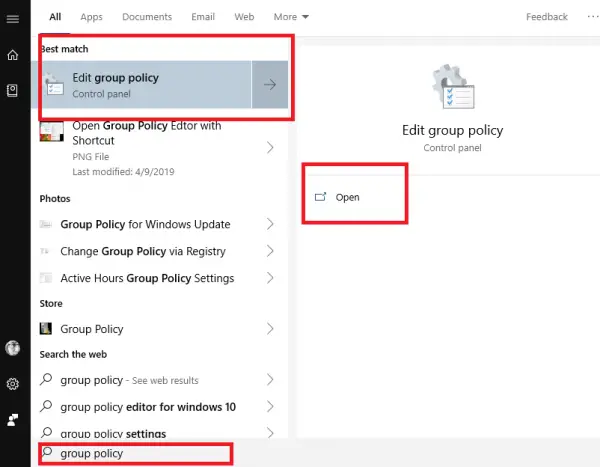
- Press the Windows button to open Start Menu
- Type “group policy.”
- It should list the policy editor on the tap
- Click open to open the Group Policy Editor.
Read: How to search Group Policy for specific GPO in Windows 11/10.
2] Create a Desktop Shortcut
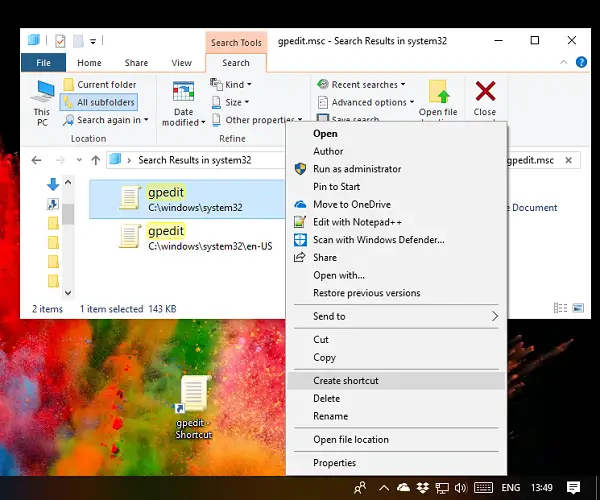
If you use it often, it is best to create a shortcut on the desktop and even assign a hotkey.
- Navigate to C:\Windows\System32
- Search for “gpedit.msc”
- Once it appears, right-click on it, and select Create a shortcut.
- Click Yes when it prompts that the shortcut can only be created on the desktop
- Next time you want to open it, double-click to launch it.
You can also assign a hotkey to it, and you can start it using a keyboard combination.
Read: Most important Group Policy settings for preventing Security Breaches
3] Using Command Prompt or Power Shell
If you are a power user who uses Command Prompt or the Power Shell, here is a nifty solution for you.
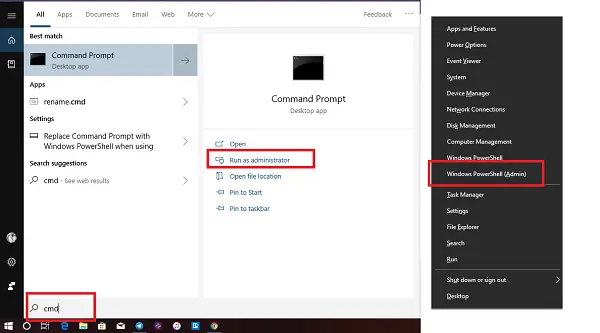
Make the WinX Menu show PowerShell instead of Command Prompt.
Then open Win+X and select Windows Power Shell (Admin).
Or you could search for CMD and choose to launch it with admin privileges.
Type “gpedit” and it will open the GPE in a few seconds.
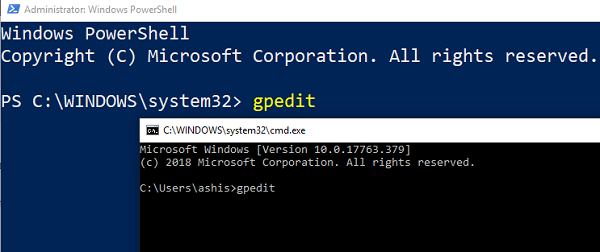
4] Using Run Prompt
Probably the easiest method, and also the most common one.
- Open the Run prompt (WIN+R)
- Type gpedit.msc, and hit Enter
- You may get prompted with the UAC prompt
- Choose yes, and it will launch the Group Policy Editor
5] Via Control Panel
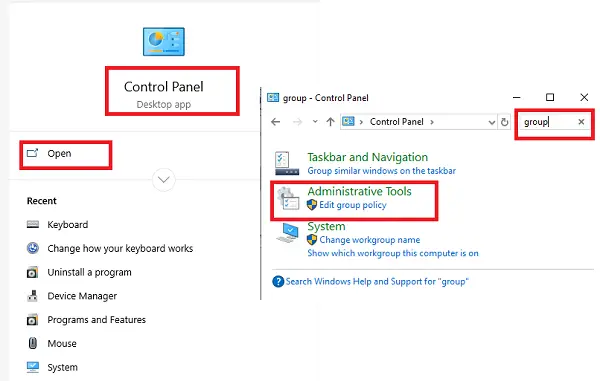
- Open the search bar, and then type control
- It will reveal the Control Panel. Click or tap to start it
- In the search box on the top right, type “group.”
- Look for Administrative Tools > Edit group policy
- Click to launch it
It is useful for those who use the Control Panel for almost everything to manage the computer.
6] Via Settings
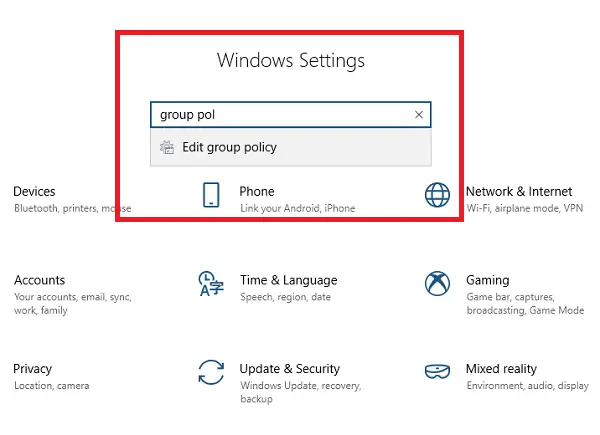
- Open Windows Settings
- Type Group Policy and GPE should be available
- Click on the result, and it will start the editor.
Which method to open Group Policy Editor is your favorite? Let us know in the comments.
Related read: How to repair a corrupt Group Policy in Windows.
Why can’t I find Group Policy Editor?
The Group Policy Editor is available in Windows Pro, Windows Enterprise, and Windows Education editions only, and not in Windows Home – so maybe you are running Windows Home Edition. If you are using Windows Home Edition, you need to add the Local Group Policy Editor to your computer. See this post if Windows cannot find GPEDIT.MSC on Windows Pro/Enterprise or Education editions.
How to open Group Policy Editor with CMD?
To open Group Policy Editor using the Command Prompt, PowerShell, or Windows Terminal enter gpedit.msc in the command line and hit Enter, as explained above.
How to open Local Group Policy Editor as administrator?
To open Local Group Policy Editor in Windows as an administrator, open Command Prompt as administrator, type gpedit and hit Enter. This will open the Local Group Policy Editor in elevated mode.